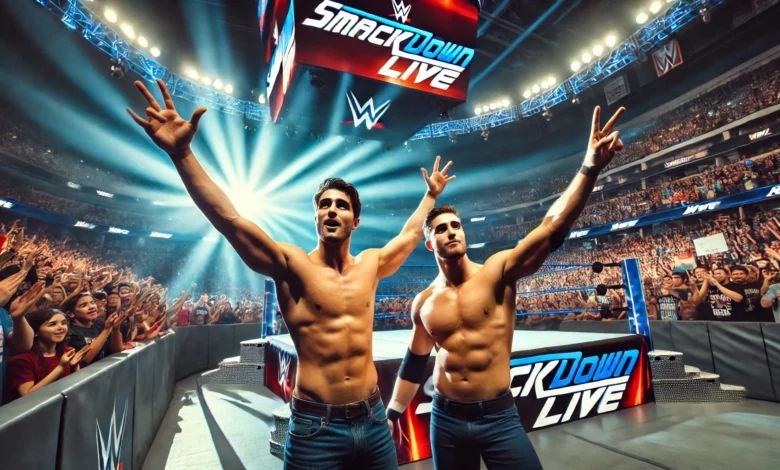WWE Reportedly Changed Matches After SmackDown in Orlando

Introduction: A Shift in Plans Caught Fans by Surprise
In a dramatic post-show development, WWE reportedly changed matches after SmackDown in Orlando, leading to a completely revamped lineup of dark matches. These behind-the-scenes decisions reflect WWE’s ongoing strategy to create thrilling content while responding in real time to crowd energy, talent availability, and storyline demands. For fans in attendance, the unexpected switch-ups turned the night into something even more memorable.
Original Match Card vs. Final Outcomes
Planned Match Card
Initially, WWE had promoted two significant dark matches for the Orlando audience:
- Sami Zayn vs. Ludwig Kaiser
- Triple Threat Match for the World Heavyweight Championship: Gunther vs. Jey Uso vs. Damian Priest
These matches had the potential to elevate the night’s excitement even further. However, the final execution turned out to be quite different from what fans expected.
What Actually Happened
According to backstage reports, the original matchups were entirely replaced:
- Sami Zayn ended up facing Santos Escobar instead of Kaiser.
- The highly anticipated Triple Threat match was changed to a singles bout between Gunther and Jey Uso.
However, that match didn’t reach a clean finish. Interference from Ludwig Kaiser and Damian Priest led to the bout being thrown out. In a surprise twist, a tag team match was set up on the fly:
- Jey Uso and Damian Priest teamed up against Imperium (Gunther and Ludwig Kaiser), with the faces walking away victorious.
These unexpected changes created an electric atmosphere in the arena.
Why WWE Made These Match Changes
1. Enhancing Fan Satisfaction
WWE often makes on-the-spot decisions based on how the crowd reacts during the live show. These changes weren’t just random; they were made to give fans a satisfying conclusion to their night. When plans shift and unexpected matchups occur, fans feel like they’re witnessing something unique—which boosts WWE’s reputation for thrilling entertainment.
2. Real-Time Creative Adjustments
Changing matches also allows WWE creative teams to test new combinations or redirect storylines quickly. Inserting a tag team bout after a no-contest singles match keeps the momentum going without breaking character arcs. It’s a clever way to pivot while still protecting key superstars from taking unnecessary losses.
3. Possible Talent or Logistics Concerns
While no official reasons were given, talent health and availability can always influence last-minute match adjustments. If any of the scheduled superstars were unfit to compete at full capacity, WWE would rather change the match than risk long-term injury or poor crowd reactions.
The Crowd Reaction in Orlando
Fans in Orlando responded positively to the alterations. While some were confused at first, the surprise factor ultimately added to the night’s enjoyment. The energy stayed high, and the tag team victory gave the audience a feel-good ending, which is a key priority for WWE during live tapings and house shows.
What This Means for WWE’s Booking Strategy
1. A Willingness to Experiment
This incident shows WWE’s readiness to adapt storylines on the fly. Whether testing a new partnership like Jey Uso and Damian Priest or shielding a champion like Gunther from taking a loss, these strategies serve both storyline development and character protection.
2. Better Live Experience Equals Stronger Brand Loyalty
Satisfied fans are more likely to return for future shows, spread the word, and stay invested in weekly programming. WWE understands this well and frequently adjusts its plans to ensure the live audience leaves happy.
3. Flexibility as a Strength in Modern Wrestling
In the current era of real-time feedback on social media and live streaming, flexibility is more than just helpful—it’s essential. WWE’s ability to shuffle matches based on conditions is a clear advantage that allows it to keep evolving with audience demands.
Conclusion: A Smart Move That Paid Off
To sum it up, WWE reportedly changed matches after SmackDown in Orlando, and it turned out to be the right call. By putting fans first, staying creatively nimble, and adapting to the moment, WWE proved once again why it remains a dominant force in sports entertainment. These behind-the-scenes changes may not always be visible to viewers at home, but for those in the arena, it turned a regular Friday night into something unforgettable.
Frequently Asked Questions (FAQs)
1. Why did WWE reportedly change matches after SmackDown in Orlando?
The changes were made to enhance fan satisfaction, adapt to storyline needs, and possibly address talent availability.
2. Who replaced Sami Zayn’s original opponent?
Sami Zayn faced Santos Escobar instead of the initially scheduled Ludwig Kaiser.
3. Did the World Heavyweight Championship match still happen?
No, the originally scheduled Triple Threat Match was replaced by a singles bout between Gunther and Jey Uso, which ended in a no-contest.
4. What was the main event after the changes?
The night concluded with a tag team match where Jey Uso and Damian Priest defeated Imperium.
5. How did fans react to the changes?
Fans were surprised but overall pleased, especially due to the unexpected and exciting tag team match.



